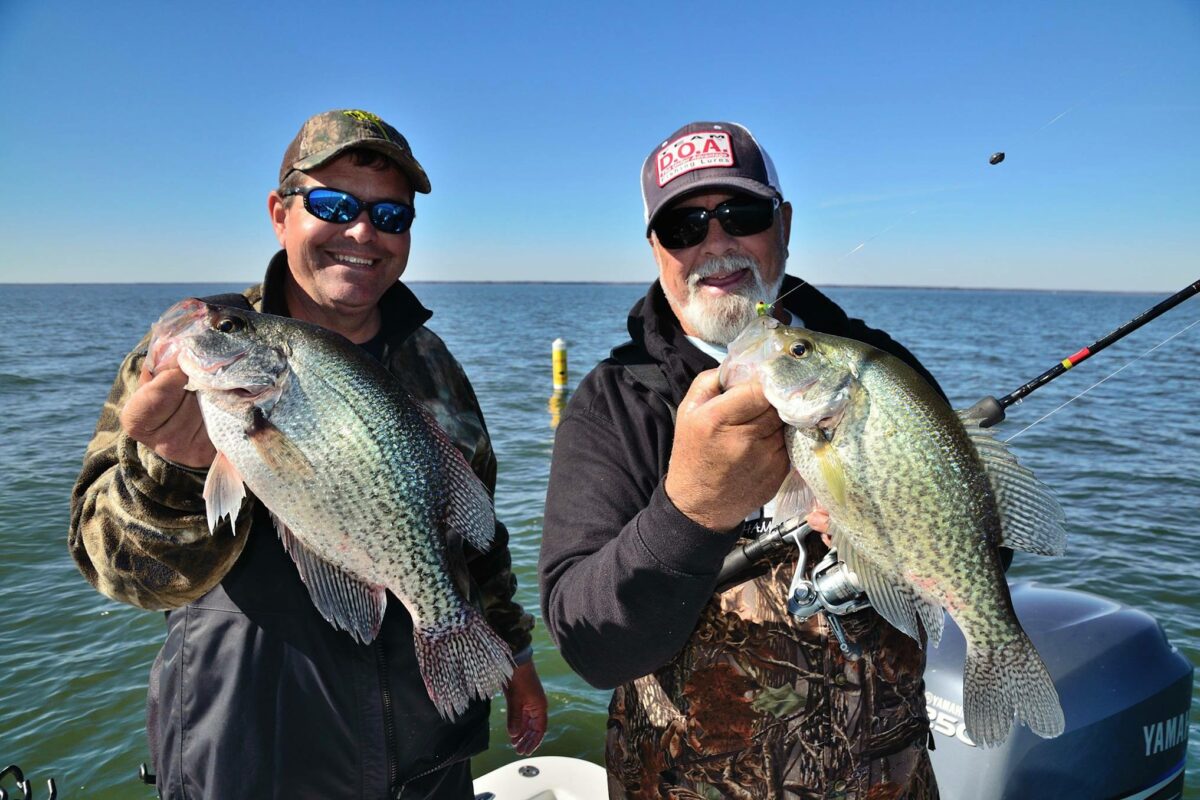You don’t often hear about outstanding bass fishing that gets overlooked, but that really can be the case with South Carolina’s Santee Cooper lakes – especially when you get outside of spring. Although these big lakes certainly get plenty of bass fishing use, national fishing acclaim gets split because of the nation’s original landlocked striped bass population, world-class trophy catfish opportunities and a legendary panfish fishery that even produced a former world record shellcracker.
There are far more catfish/striper guides around Santee Cooper than bass guides, and countless anglers make annual excursions to the lakes to target crappie on Lake Moultrie’s humps, fish for redbreast sunfish in Sparkleberry Swamp or catch giant Shellcrackers from the Diversion Canal.
If you enjoy catching largemouth bass, though, don’t overlook Santee Cooper. The same expansive fish habitat and diverse forage base that makes those other fisheries thrive sustains an outstanding and remarkably dependable bass population, with great overall quality and plenty of legitimate trophies.
Lakes Marion and Moultrie, which cover a combined 170,000 acres, make up Santee Cooper. The lakes impound the Santee and Cooper rivers, and the entire system includes various canals, dams and dikes, all constructed in the 1940s and operated by the Santee Cooper power company.
Lake Marion, locally called the Upper Lake, is elongated, with extensive swamps in its upper end and a flooded forest running much of its length (although a large portion of the main-lake trees are now broken off at water level). Moultrie is essentially round and open, but cypress flats and swampy margins surround the lake.
Both lakes offer an excellent mix of shallow habitat and deep-water escapes and extensive cover in the form of trees, stumps, brush and diverse vegetation. Bass forage includes six species of shad or herring, crawfish, and several kinds of sunfish and minnows. The diversity of the forage is part of what makes the bass population so stable. Even in years where some major variety of baitfish is scarce, another will always be plentiful.
Year-Round Approach
Although spring attracts the most bass fishermen, Santee Cooper bass guide Brett Mitchell considers the fishing equally good throughout the seasons, and he really doesn’t change his approach that dramatically.
“I almost never go all shallow or all deep,” said Mitchell, who first visited Santee Cooper when he was 2 years old and has been fishing these waters regularly since he was in high school. “I mostly focus on water between 2 and 10 feet deep, and I find fish there and feeding whether it’s the middle of the summer or the middle of the winter.”
He commonly focuses on floating and submerged vegetation, contour breaks along ditches and around humps, and currents and eddies, if significant water is pushing through the system. Trees sometimes play a role, but must less so than they do for most anglers fishing Santee Cooper.
“The trees look so appealing and certainly can provide good fishing, but a tree might hold a single fish, and someone fishing in front of me might have just caught that one fish,” Mitchell said. “I like the grass and other larger areas that continue to replenish.”
Variances that alter Mitchell’s specific approach include water level and color, seasonal cycles of various kinds of pads and grasses and seasonal forage occurrences, like the bluegill and shellcracker spawn, which concentrate bass in specific areas and cause them to key in on one kind of forage.
Mitchell mostly fishes with moving lures that allow him to cover water and find active fish. During the winter, he likes lipless crankbaits, swimbaits, and medium-diving crankbaits, pointing toward a Bandit Series 300 as a favorite. Mitchell especially like Taco Salad in a 300 because it imitates a shad but offers very good visibility in a range of water conditions.
Through the warmer months, Mitchell fishes more surface lures, especially frogs fished across stands of crested floating heart and other vegetation, plus poppers or prop baits over bluegill or shellcracker beds.
Mitchell is a big fan of spinnerbaits and swim jigs year ‘round, picking up a spinnerbait whenever the wind is blowing or there’s a bit of extra stain in the water.
“A swim jig is a big bass lure,” he said. “You might only catch five fish, but they’ll be the five you want.”
Mitchell normally fishes out of Black’s Camp, which is located at the mouth of the canal that connects lakes Marion and Moultrie. That gives him access to extensive backwaters along the western edge of Lake Moultrie and some of the best flats at the lower end of Lake Marion. It also puts him close to spots at both ends of the canal where current positions fish predictably and causes them to feed more actively.
The minimum length limit for bass on the Santee Cooper lakes is 14 inches. The regular statewide five bass limit applies. That said, total catch-and-release is the norm among bass fishermen on these waters.



